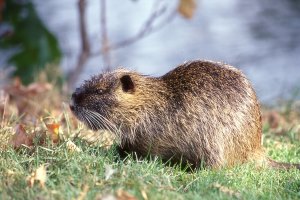
Nutria on the grounds of the Willamette Heritage Center. WHC Collections 2012.020.00179
The Short History of Nutria in the Mid-Willamette Valley
I made a new arch enemy over the holidays — a family of web-footed, rat-tailed rodents. Sweeping tidal waves of nutria poop off walkways around the museum gave me lots of time to ruminate on these pesky critters and just how they found their way into the waterways of the Mid-Willamette Valley not so very long ago.
Throughout the first half of the 20th century, the only place you would find nutria in Salem and the Mid-Willamette Valley was on store shelves and newspaper fashion columns in the form of boas and scarves[1], hats,[2] collars,[3] coats[4] and trim.[5] In 1901, the Joseph Meyers and Son store (located in the Reed Opera House) announced that it had furs “from every clime …Genuine Beavers, Rigas, Nutrias, Moufflons, Mink, Martin, Otter, Krimmer, Monkey, Astrakan, Etc.”[6] In 1913, “nutria driving caps with tan leather visors and ear tabs” were all the rage for men.[7] By 1921, Kafoury Brothers on State Street was advertising “splendid coats” with nutria (and mole, squirrel and racoon) trimmings[8] and the French Shop on High Street announced their new line of fur hats in “Seal, Nutria and Squirrel delicately trimmed with gold and silver crowns.”[9]
While a staple of the local fashion scene, nutria fur was an imported luxury good. In 1941, Salem’s Capital Journal newspaper even suggested buying nutria furs (and other furs sourced from Central and South America) to aid in National Defense. The argument was that supporting the economies of the countries would be the best argument for capitalistic governments rather than the “totalitarian barter system…So – you can give a fur coat made of pelts imported from Latin American countries and actually be very patriotic!”[10]
Although not made of nutria hair itself, in 1954, nutria-colored carpet was named as the “it” color for the season for interior design – a testament to the nutria’s place in the community’s collective consciousness.[11]
As a well-established staple of the fashion industry sold at luxury prices, it may not be too much of a stretch to understand the local enthusiasm for the farming fad that would forever change our community’s fauna.
Pioneers
The first documented (at least that I could find) nutria to visit Salem came in August, 1931. Ten pairs made a whistle stop tour in Salem on their way from Montevideo, Uruguay to Hauser, Coos County (via Portland) where they would be raised for fur production by the Northwest Fur Traders Corporation.[12] The local paper heralded these nutria as “the first of these animals ever brought into the United States,” although it is hard to determine how much of that claim was truth and how much was exaggeration – a similar claim would be made by a Olathe, Kansas-based farmer in the same Salem paper three years later.[13]
The visit likely made an impression on local farmers, some of whom had already started experimenting with raising fur bearing animals like foxes and mink as part of diversifying their business.[14] By 1937, William Jesse Turnidge[15] in the Scio-area had added nutria to his fur farm. Obtaining five cousins of those first nutria to visit Salem, Turnidge went on a bit of a publicity binge about their lucrative promise in the fur market.[16] Turnidge, who in the 1930 census had been managing a mink company, claimed that nutria would do well in the mid-Willamette Valley because it lacked the vicious predators that had stalked and decimated the nutria young in the Coos County venture – seagulls. [17] Soon Turnidge’s nutria were also being grown to sell for breeding stock for other farmers[18] and a community of growers developed in the area.[19] By 1938 in the Detroit (Oregon) area, several fur farmers had also sprung up. While many raised foxes and mink, Bill Siefert and Frank Stahlman chose to focus on nutria.[20]
Retire on ½ acre, Raise Nutria Fur Animals
There is little newspaper evidence to explain the lead up to what happened next, but in 1955 nutria went from a sideline experiment to a miracle investment, and the next biggest fad. All bright with hope and promise, the Capital Journal newspaper reported “Nutria…has arrived in Marion county on an industrial basis.” With detailed descriptions of care and feeding of the ridiculously swift to multiply animals and promising enormous rates of returns, nutria promoters in the Salem-area offered economic gold for those willing to invest. As one article wrote: “All the feeding required are three handfuls of rabbit pellets and corn once a day. The animals are clean, hardy, have no odor and are subject to no special diseases. They are gentle and can be trained as pets, and will stand on their hind feet begging for carrots.”[21] The paper quoted a market value of $40 per pelt at just the cost of $7 in food and water.[22] A “display ranch” was set up at 1160 Wallace Road in West Salem, which offered free booklets with tips on how to get started in nutria raising. Their advertisement insisted that a half-acre and nutria were all a person needed to comfortably retire.[23]
After what appears to be some rivalry, the non-profit trade organization Oregon Purebred Nutria Associates, Inc. set up their corporate offices at 262 South Lancaster Drive with another display ranch.[24] The papers claimed that Salem would be the headquarters of the up-and-coming nutria industry in the state and maybe even region.[25] Interest was keen, driving up prices on the limited supply of breeding stock. At one point in time breeding pairs could sell for as much as $1000 – $1200.[26]
One enterprising Cascade High School student even saw the opportunity to help fun his college plans. Starting with two animals, over the course of a few years he grew his stock to over three hundred.[27]
Flash in the Pan?
Less than two years after this flurry of advertisements and activity, the nutria bubble seemed to be bursting. The Oregon Statesman newspaper farm editors reported in November 1956, that: “it is indeed unfortunate that the nutrias have been rapidly increasing while the prices paid for their pelts have been decreasing,” with an average price per skin at just three dollars.[28]
Not quite ready to give up, people got creative. They invited those same farm editors to a dinner at The Ranch Restaurant on Portland Road, in which the chef prepared nutria — fried, roasted, barbecued and tetrazzined. The publicity stunt was part of a plan to rebrand nutria from fur bearing animals to a source of luxury meat. “Plans are…to serve nutria at ‘steak prices’ in restaurants and put it in to the markets as rabbit is used,” organizers said. An invited OSU (then Oregon State College) professor to the meal was quoted as saying “he believed nutria would become a popular meat.” The reporter was a little more tempered in her predictions: “But no matter whether nutria does or does not become one of our valley’s major livestock—or fur –crops, we (the farm photographer and farm editor) have eaten it, and we found it very good. Try it sometime is our advice.”[29]
Mass Exodus and Consequences
Just a little over a year after the dinner, the same reporter wrote: “Nutria, once expected to make fortune for owners, may become a real menace to the state.”[30]
Unable to maintain the animals, many resorted to illegally releasing them into the wild.[31] In May 1959, Oregon State Game Commission, Fur Resources Division spokesperson Chester E. Kebbe predicted: “Oregon is all set for a nutria outbreak if the animals find conditions along the streams suitable.”[32] A chilling, but accurate prediction given their plentifulness today.
Voracious eaters, and incessant multipliers, the nutria posed threats to agricultural crops[33], native flora and fauna,[34] livestock heath[35] and even infrastructure through its invasive burrowing along waterways.
One nutria in Amity, met its untimely end at the end of Orville Kurtz’s gun after what the paper termed a “ten-day reign of terror” in which he mowed down a swath of willow trees and damaged the farmer’s dam.[36] Polk County commissioners lamented the nutria “plague” after an unsuccessful poisoning program spurred on by crop damage prompted some kind of action. “’Strychnine just makes them lick their lips,’ said commissioner Allen Dunn, who has done considerable study of the nutria problem. ‘the court will probably instruct the county trapper to begin concentrating on nutria’ and hunting the animals for sport may be encouraged.”[37]
It wasn’t just the farmers that were frustrated. Keizer-based trapper Paul Feess complained in 1966 that “you have to fight your way through the nutria to get to the beaver.” While he had some luck getting a bit of a return on the pelts of the nutria he ended up trapping, the prices having risen some after the market collapse, Feess was still pessimistic about the future of the animals in the area. The paper quoted him as stating: “Mother nature will prevent nutria over population by killing them off with disease…but they will always be a problem.“[38] Many decades later, the sentiment still rings true.
Article researched and written by Kylie Pine. Copy ran in the Statesman Journal February 2024. Reproduced here with citations for reference purposes.
Citations
[1] Advertisement Oregon Statesman 23 Nov 1904 pg 6 (Newspapers.com); Advertisement Oregon Statesman 21 September 1902 pg 4 (Newspapers.com); “The Furs She Will Wear.” Oregon Statesman 16 September 1915 pg 13 (Newspapers.com)
[2] Advertisement. Capital Journal 17 April 1936 pg 9 (Newspapers.com) — Miller’s Department Store (Salem) showing Gordon Hats “for men who demand good quality nutria fur felt.”
[3] “Dye Fur to Match Fabir, New Note.” Oregon Statesman 20 September 1934 pg 6 (Newspapers.com)
[4] Mason, Margaret. “Margaret Mason Writes on Gotham Fads and Fashions.” Capital Journal 08 Sept 1917 pg 5 (Newspapers.com); “For Cold Days.” Oregon Statesman 11 July 1935 pg 13 (Newspapers.com)
[5] “What shall we wear?” Oregon Statesman 15 Aug 1919 pg 2 (Newsappers.com)
[6] Advertisement. Capital Journal 21 September 1901 pg 3 (Newspaper.com)
[7] “Some Recent Novelties for Motor Use.” Oregon Statesman 06 April 1913 pg 16 (Newspapers.com)
[8] Kafoury Bros Ad Oregon Statesman 22 Sept 1921 pg 6 (Newspapers.com)
[9] The French Shop Ad Oregon Statesman 20 Nov 1921 Pg 11 (Newspapers.com)
[10] “Buying Furs will Assist in Defense.” Capital Journal 27 Nov 1941 pg 11 (Newspapers.com)
[11] Memo from Mary. Oregon Statesman 07 Feb 1954 pg 6 (Newsappers.com); New designs and textures add luster to 1954 rugs, carpeting. Oregon Statesman 22 March 1954 pg 23 (Newspapers.com)
[12] “Rare Animals Visitors Here. Capital Journal 14 Aug 1931 pg 7 (Newspapers.com)
[13] Nutria Produced in the United States. Capital Journal 22 March 1934 pg 5 (Newspapers.com)
Olathe, Kansas – James G. Manning, who imported the first nutria, or South American beaver, to this country, believes the demand for the animals’ fur will result in numerous domestic breeding farms in the United States…..The animals are easily raised, according to Manning, who now has 18. The original pair died recently….
[14] While a more comprehensive survey would need to be made, there are many early mentions of raising fur as part of up and coming agro-industry in the area. See: ”The Future of the Valley” Oregon Statesman 01 Jan 1925 pg 30 (Newspapers.com)…”The growth in various agricultural industries along the lines of diversified farming, as berry growing…fur farming, and many other lines…”; Foxes: “Silver Black Fox Farming” Oregon Statesman 12 Oct 1924 pg 1 (Newspapers.com); ”Fox Farming as an Industry. Oregon Statesman 01 Jan 1907 pg 29 (Newspapers.com); Mink — “To Raise Mink” Greater Oregon (Albany) 15 Dec 1936 pg 4 (Newspapers.com)
W.J. Turnidge of Scio was an Albany business visitor Monday. Mr. Turnidge stated that he has purchased some mink and he is going to raise mink and fox at his Scio home.
[15] Listed in most articles as W.J. Turnidge. However, not the 1930 US Federal Census (Scio, Linn, Oregon) Ancestry.com which gives first name as William and 1894 Birch Certificate for Clement Elijah Turnidge (Ancestry.com) which lists full name as William Jesse Turnidge. And Obituary – William J. Turnidge Greater Oregon (Albany) 16 June 1950 pg 7 (Newspapers.com) for full name given here.
[16] “Associate Matron Visits at Chapter” Oregon Statesman 14 March 1937 pg 2 (Newspapers.com); “Breeding of Coypus Still Experiment.” Capital Journal 15 March 1937 pg 4 (Newspapers.com); “Turnidge Starting Fur Farm Near Scio with Coypu or Nutria, Native of South American Mountain Range.” Oregon Statesman 6 April 1937 pg 3 (Newspapers.com) – “Turnidge secured his present stock in the vicinity of Marshfield.”; “Valley Held Adapted for Copy Breeding; Pelts Held Valuable.” Capital Journal 06 April 1937 pg 2. (Newspapers.com) – “W.J. Turindge…who recently received five of the little rodents from the Marshfield locality on the Oregon Coast.”
[17] “Associate Matron Visits at Chapter” Oregon Statesman 14 March 1937 pg 2 (Newspapers.com); “Breeding of Coypus Still Experiment.” Capital Journal 15 March 1937 pg 4 (Newspapers.com); “Turnidge Starting Fur Farm Near Scio with Coypu or Nutria, Native of South American Mountain Range.” Oregon Statesman 6 April 1937 pg 3 (Newspapers.com) – “Turnidge secured his present stock in the vicinity of Marshfield.”; “Valley Held Adapted for Copy Breeding; Pelts Held Valuable.” Capital Journal 06 April 1937 pg 2. (Newspapers.com) – “W.J. Turindge…who recently received five of the little rodents from the Marshfield locality on the Oregon Coast.”; “To Raise Swamp Beaver for Fur” Greater Oregon (Albany) 09 July 1937 pg 2 (Newspapers.com); “Coypus, Strange Animals Shown by Scio Visitor.” Oregon Statesman 29 July 1937 pg 4 (Newspapers.com)
[18] “Grow Mink or Nutria” Greater Oregon (Albany) 02 November 1937 pg 2 (Newspapers.com)
[19] “Nutria Doing Well.” Capital Journal 14 March 1938 pg 10 (Newspapers.com)
[20] Fur Industry Is Started, Detroit.” Oregon Statesman 21 Jan 1938 pg 8 (Newspapers.com)
[21] “Nutria Industry Comes with City Headquarters.” Capital Journal 01 April 1955 Pg 13 (Newspapers.com) ILLUSTRATED
[22] “Nutria Industry Comes with City Headquarters.” Capital Journal 01 April 1955 Pg 13 (Newspapers.com) ILLUSTRATED
[23] Advertisement. Oregon Statesman 2 April 1955 pg 3 (Newspapers.com)
[24] “Announcement.” Oregon Statesman 16 May 1955 pg 8 (Newspapers.com); “Raising of Nutria Now Going on Here” Capital Journal 30 Dec 1955 pg 13 (Newspapers.com)
[25] “Nutria Industry Comes with City Headquarters.” Capital Journal 01 April 1955 Pg 13 (Newspapers.com) ILLUSTRATED
[26] Madsen, Lillie L. “Nutria Menace Possible.” Oregon Statesman 12 May 1959 pg 3 (Newspapers.com); Nicholson, Paul. “Water Abuses can be Costly” Capital Journal 11 Feb 1960 pg 36 (Newspapers.com). Both of these local articles quote the $1000 and $1200 figure. It should be noted that this may have been a national figure rather than a local one. The $1200 figure matches the amount several Californians were indicted in a fraud scheme over. See: “3 Sentenced in Nutria Fraud Case.” Pasadena Independent. 19 Sept 1961 pg 4 (Newspapers.com)
[27] Sidwell, Lloyd. “Cascade High School Youth Develops own Nutria Ranch.” Oregon Statesman 11 December 1958 pg 15 (Newspapers.com) WHC 0085.006.0015-0054
[28] Nutrias Increase Rapidly Reports Ashbrook of USDI Oregon Statesman 22 Nov 1956 pg 18
[29] Lillie L. Madsen. “Nutria Offers Tasty Meat as well as Providing Excellent Fur.” Oregon Statesman 31 Jan 1957 pg 14 (Newspapers.com) ILLUSTRATED
[30] Madsen, Lillie L. “Nutria Menace Possible.” Oregon Statesman 12 May 1959 pg 3 (Newspapers.com)
[31] “Nutria, Now known as crop Killer, Introduced as Asset.” Oregon Statesman 04 Oct 1967 pg 16 Newspapers.com
[32] Madsen, Lillie L. “Nutria Menace Possible.” Oregon Statesman 12 May 1959 pg 3 (Newspapers.com)
[33] “Nutria, Now known as crop Killer, Introduced as Asset.” Oregon Statesman 04 Oct 1967 pg 16 Newspapers.com
[34] Nicholson, Paul. “Water Abuses can be Costly” Capital Journal 11 Feb 1960 pg 36 (Newspapers.com) -Having the insatiable appetite of a ruck crusher, the Nutria destroy all aquatic vegetation on which muskrats and waterfowl depend for food.
[35] “Nutria, Now known as crop Killer, Introduced as Asset.” Oregon Statesman 04 Oct 1967 pg 16 Newspapers.com –great spreaders of liver fluke in sheep
[36] Stafford, June. “Illegal ‘Logger’ shot by Angry Amity Famer at Height of Spree.” Oregon Statesman 12 Feb 1961 pg 12 (Newspapers.com) illustrated
[37] Davies, Daniel W. “Nutria Infestation Plague Polk” Oregon Statesman 26 Feb1965 pg 8 *Newspapers.com)
[38] Don Scarborough. Salem Trapper Prefers Oregon Over Far North Oregon Statesman 06 Jan 1966 pg 5. ILLUSTRATED (Newspapers.com)
Selected, Transcribed Source Material
Rare Animals Visitors Here. Capital Journal 14 Aug 1931 pg. 7
Salem people who are interested in rare animals and furs had an unusual opportunity Thursday when representatives of the Northwest Fur Traders corporation stopped briefly in the city with 10 pairs of the South American nutria, one of the most famous of the world’s fur bearing animals. The 10 pairs of live little animals represent an investment of $3,000.
The animals, which are akin in habits and appearance to the muskrat, and somewhat also like the beaver, are being taken to the corporation’s animal farm at Hauser, Coos county. There they will be allowed to breed and possibly later, if experiments prove successful, will be inbred with muskrats. They breed three times yearly and litters of the young range from six to 12.
These are the first of these animals ever brought into the United States, and were four months aboard ship from Montevideo, their native country, to Portland, Stringent regulations govern their shipment from South America, and export is restricted.
R.E.E. Nathason, president of the fur corporation, Harry Brubaker, sales manager, and Roy R. Johnson, superintendent of farms were with the car that brought the animals through Salem. The concern also has a farm in Klamath county.
“Associate Matron Visits at Chapter” Oregon Statesman 14 March 1937 pg 2
Coypus propagated
A new species of fur-bearing animal, the Coypu, native of South America, is being propagated at the W.J. Turnidge place in Scio, he having secured five of the rodents a short time ago. It is stated that only a limited number of coypu farms have been successfully operated in North America….
“Breeding of Coypus Still Experiment.” Capital Journal 15 March 1937 pg 4
Scio – W.J. Turnidge, has five coypus at his place in the west outskirt of Scio and will experiment in the propagation of the rodents as producers of the fur nutria, used in the manufacture of women’s garments. The animal, also called nutria, is a native of South America and has webbed hind feet. Efforts have been made to establish similar fur farms on the Pacific coast at Marshfield but failed on account of destruction of the young by seagulls.
“Turnidge Starting Fur Farm Near Scio with Coypu or Nutria, Native of South American Mountain Range.” Oregon Statesman 6 April 1937 pg 3
Scio, April 5, W.J. Turnidge of Scio expresses confidence in ultimately establishing and extensive fur farm from the start he now has in five adult coypus. Increase is rapid, Turnidge states, and conditions are considered favorable to propagation of the animals in this part of the Willamette valley.
Southern Oregon has a prosperous industry in coypu fur, or nutria, according to the Scio man. Other sections of the northwest have experimented in this line with varying results.
Although far from its native Argentine home in South America the coypu is said to have been well established in Quebec and other Canadian provinces. Pelts sell for $20 to $30, and the demand at present far exceeds the supply in this country, it is stated.
Turnidge secured his present stock in the vicinity of Marshfield. Efforts at propagation there were not wholly successful, on account of the ravages of seagulls, which devoured the young as fast as they appeared. The Willamette valley is reported ideal for them
FROM SOUTH AMERICA
The native name in South America is coypu, or swamp beaver. It is also known as nutria and produces the fur of that name. It is a rodent quadruped and is found in many parts of South American and on both sides of the Andes mountain range.
Adult males weigh approximately 25 pounds and females about 17 pounds….
The flesh of the coypu is considered a delicacy on French tables and it is also eaten in this country, it is said.
Habits of coypu are much like those of a beaver.
“Valley Held Adapted for Copy Breeding; Pelts Held Valuable.” Capital Journal 06 April 1937 pg 2
Scio –The Willamette valley in general and the Scio area in particular, are thought to be well adapted to propagation of the fur-bearing animal known as the coypu, or nutria, according to W.J. Turnidge of this city, who recently received five of the little rodents from the Marshfield locality on the Oregon coast.
“In this section we are safe from the onslaughts of seagulls, which decimated the droves and militated against the best success of the venture near the sea,” Turnidge stated in Scio this week.
“Although only a limited number of fur farms of this nature have been undertaken in Oregon, conditions are thought to be favorable in this part of the state,” he said.
“Nutria Industry Comes with City Headquarters.” Capital Journal 01 April 1955 Pg 13 ILLUSTRATED
CAPTION: Nutria, shown above, has arrived in Marion County on an industrial basis and is being introduced here by Paul Stege, 1160 Wallace Road, well known Salem man. The valuable, fur-bearing animal already has a good start in Oregon. It is planned to make Salem headquarters of industry in this state.
It is being introduced into Marion County with the assistance of Paul Stege, 1160 Wallace road, and importer of the animal is C.K. Southworth, formerly of Salem, now of Portland. His father was a Salem doctor. The nutria is imported from Argentina…
The pelt of the nutria measures 32 to 40 inches and is of extreme density and softness, and has a present market value of $40. Stege says the cost in feed and water to produce such a skin is about $7.
Nutria are raised in open pens built on three-foot masonry block walls with pumice floor, with a shallow pool at one end and covered nest boxes at the other. Temperature controls are not necessary, since the animals thrive in a temperate climate.
All the feeding required are three handfuls of rabbit pellets and corn once a day. The animals are clean, hardy, have no odor, and are subject to no special diseases. They are gentle and can be trained as pets, and will stand on their hind feet begging for carrots.
Already there is an organization in Oregon known as the Purebred Nutria Ranchers Association and in Oregon and California more than 200 ranchers are producing them.
Salem is to be Oregon headquarters and possibly the northwest headquarters for the nutria industry.
“New Business names filed.” Oregon Statesman 30 April 1955 pg 5
Assumed business names file this week with the Marion County Clerk….
Purebred Nutria Farms 1160 Wallace Road by H.C. Howell; Purebred Registered Nutria of America, 1160 Wallace Road by H.C. Howell.
“Announcement.” Oregon Statesman 16 May 1955 pg 8
The Board of Directors of the Oregon Purebred Nutria Associates, Inc., announces that it is no longer represented by the firm known as Purebred Registered Nutria of America, 10821 SE Powell, Portland and 1160 Wallace Road, Salem.
Hereafter, Purebred Registered Las Tres Lagunas Nutria Will be distributed exclusively by the Sales Division of this corporation, with offices at 262South Lancaster Drive, Salem, Oregon, telephone 4-6845. Authorized representatives of this Association are Paul Stege, F.E. Murphy, Vernon Windsor, Joseph Burn and C.K. Southworth.
“Raising of Nutria Now Going on Here” Capital Journal 30 Dec 1955 pg 13 ILLUSTRATED
(caption: The odd appearing animal being held by Tom b. Hill is an Nutria…..The animal pictured here was photographed at the Oregon Purebred Nutria Associates district office here.
One of the newest aspects of agriculture in Oregon is the raising of nutria, a strange-appearing native of Argentina.
Introduced into the state in a commercial way but a year ago, the fur-bearing animal has attracted considerable attention. According to the Oregon Purebred Nutria Associates, Inc., officials here, there are now about 225 persons engaged in raising nutria on the Pacific coast.
The animal has a most unusual appearance. About the size of a beave, it has webbed hind feet like a duck, hands with a true thumb like a monkey, beaver-like teeth, and fur similar to that of an otter. Mammary glands on the females are located on the back, on each side of the backbone.
Purebred nutria were introduced into this country by C.K. Southworth who worked at the Frezzi ranch in Argentina where the purebred animals were developed from the native animal.
Oregon Purebred Nutria Associates, Inc., is a non-profit agricultural association which is importing animals from the Frezzi ranch and also supervises ranching and breeding methods. It runs a bloodline check on each animal as it is born to follow through for breeding purposes.
In addition to the natural brown color, mutations have been developed at the Frezzi ranch and pairs of jet black, white, and gold nutria, the first of their type to be imported into the country, are scheduled to arrive in Portland by air in February…
A bright future for nutria fur is predicted by the breeders.
A regional office of the Oregon Purebred Nutria Associates is located at 262 South Lancaster drive here, where there is a display ranch.
Lillie L. Madsen. “Nutria Offers Tasty Meat as well as Providing Excellent Fur.” Oregon Statesman 31 Jan 1957 pg 14 ILLUSTRATED
If you are getting worried about what is to be done with all the little furry nutria animals being raised in the cement pens through the Willamette Valley…don’t be. Any surpluses will be eaten. In fact, we might say the by-product of the furs—which would be the carcasses, will be eaten…Yes that was my first reaction, too. I had seen the little animals in their pens. I had admired their beautiful soft furs. To me they had become another form of mink. But I was wrong. They should have reminded me of rabbit instead. I found this out the only way one really ever finds out anything for sure – by trying it. The meat tastes like the dark meat of turkey, or like veal or rabbit, or perhaps a little of pheasant.
Prepared 4 ways.
Hosts for the tasting bee were Mr. And Mrs. James L. Carr of Marion. The nutria dinner to which I-with a dozen or more others had been invited was served at The Ranch, the venturesome restaurant on Portland Road. The chef, William Ward, prepared nutria in a variety of styles. We had our choice of fried nutria, of roasted, of barbecued and of the Tretrazznied (herb treated). Most of us had all four kinds. I liked best the fried or that in the Italian style.. But then I like my beef or my lamb best that way, too.
But take Reg S. Williams, Salem attorney, who with Mrs. Williams was amongst the guests…he just couldn’t make up his mind which way he liked nutria best….
The little fur bearing animals were served up with baked potato, a delightful mixed green salad, a choice of salad dressings, carrot and celery sticks, pumpkin and mince pie and coffee.
EATEN OTHER PLACES
The Carrs, who started out with four animals some 20 months ago, now have 300 – not all by multiplication –some were added by purchase. Not being satisfied with merely knowing what the promoters could tell them about their venture—which was quite a bit, the couple said –they began reading and studying background and found that in Argentina and in Europe, as well as in California, nutria has been served for many of the 80 years it has been domesticated. It is considered a great delicacy as the piece de resistance.
After all, nutria animals are completely vegetarian. They eat only vegetables, grasses, grains—in which , too, they are like rabbits, and not like—well we won’t even suggest it now that we’ve taste the nutria.
Their edibility is one reason why nutria may live longer with us as a good financial investment, than have some other—show we say “promotions?”
Plans are, said Mr. And Mrs. Carr, to serve nutria at “steak prices” in restaurants, and put it into the markets as rabbit is used. Dr. Howard H. Hillemann, in the school of science at Oregon Stat College, a guest at the Tuesday night dinner, said he believed nutria would become a popular meat…
Mrs. Williams dropped the thought that perhaps a trade name for the meat to disassociate it from is fur bearing qualities, might help in its popularity…
But no matter whether nutria does or does not become one of our valley’s major livestock—or fur –corps, we (the farm photographer and farm editor) have eaten it, and we found it very good. Try it sometime is our advice.




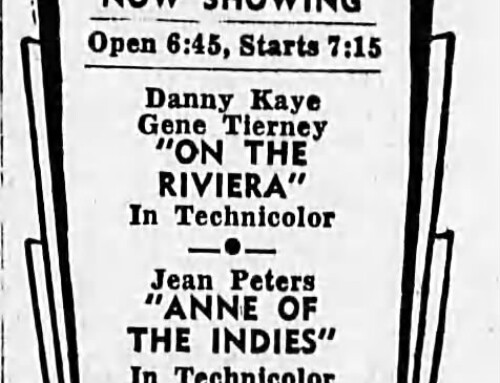
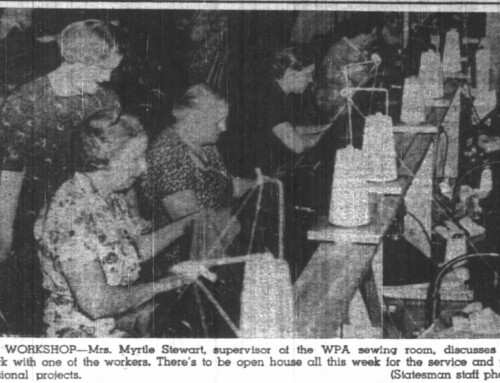
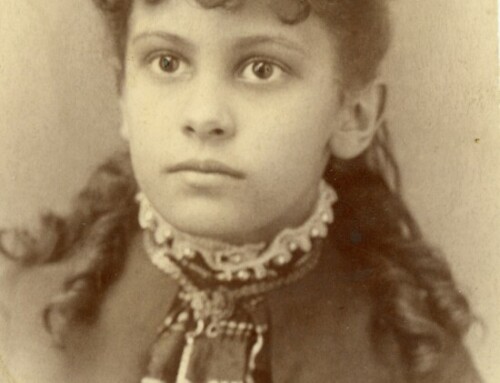
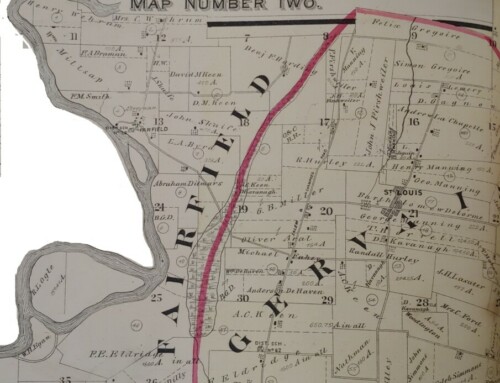
Leave A Comment